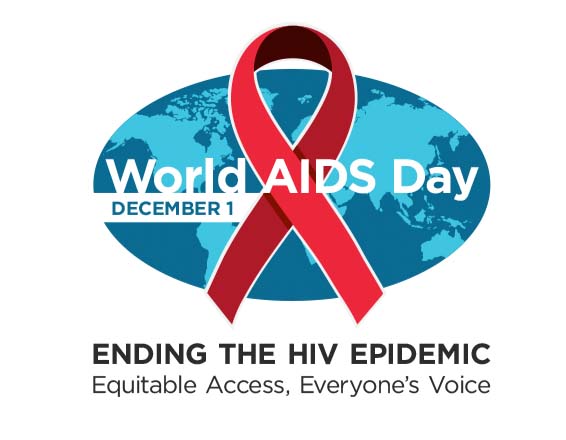December is World AIDS Awareness Month and we are using this day to reflect upon our worldwide response to the HIV/AIDS epidemic. This year marks 40 years since the first cases of what would become known as AIDS were reported. We are honoring the more than 36 million people worldwide, including 700,000 in the United States, who lost their lives to AIDS and related illness since the beginning of the epidemic. This year’s theme for World AIDS Day 2021 is Ending the HIV Epidemic: Equitable Access, Everyone’s Voice which highlights the commitment to ending the epidemic globally as we address health inequalities and put the voices of people living with HIV at the center of the work that is done.
Currently, there are approximately 38 million people living with HIV globally while 19% of those 38 million are unaware of their status. The vast majority of those living with HIV are located in low and middle income countries. There are approximately 20.7 million people living with HIV in East and Southern Africa due to the lack of accessibility to healthcare services and information about AIDS. Many people living with HIV or at risk for infection do not have access to prevention, treatment, and care, all the while there is still no cure.
HIV/AIDS is treatable, manageable and preventable. HIV is mainly treated with once daily, oral medications that decrease transmission rates to nearly zero. Meaning, one can live with HIV and with complete compliance, it will become undetectable, decreasing transmitted to another person while allowing them to live without a burdensome treatment regimen. Many people living with HIV lead regular lives with the regular support of these therapies along with their healthcare providers and support from their loved ones.
HIV can be preventable. Behaviors and conditions that can put individuals at risk include but are not limited to:
- Having unprotected intercourse
- Sharing contaminated needles, syringes and other injecting equipment when injecting drugs
- Receiving unsafe injections, blood transfusions, and medical procedures that involve unsterile cutting or piercing
- Experiencing accidental needle stick injuries, including among health workers
Individuals can reduce the risk of infection by limiting exposure to risk factors. Some approaches for HIV infection prevention include but are not limited to:
- Condom use
- Regular testing and counseling for everyone especially high risk individuals
- Always using clean/new needles when injecting
- For those at high risk of infection, take pre-exposure prophylaxis (PrEP) to prevent HIV transmission
- Testing regularly to maintain awareness of one’s status to promote less risky behaviors
HIV treatment has come quite a long way since its discovery. Today’s treatments are incredibly effective and easy to take. They are often only between one and three pills per day and have fewer and much less severe side effects. Taking HIV medication as prescribed can help lower your viral load. It can get so low that the virus becomes undetectable by a lab test. Once your viral load is undetectable, sticking with your HIV treatment will help keep you healthy and help decrease your risk of transmitting the virus to others. By remaining adherent to treatment, those who have been diagnosed with HIV can live relatively normal and healthy lives.
It is our pleasure at Perigon Pharmacy 360 to continue supporting those living with HIV. We are prioritizing our care to underserved areas in our community and take great pride in supporting the physicians who care for these patients.

